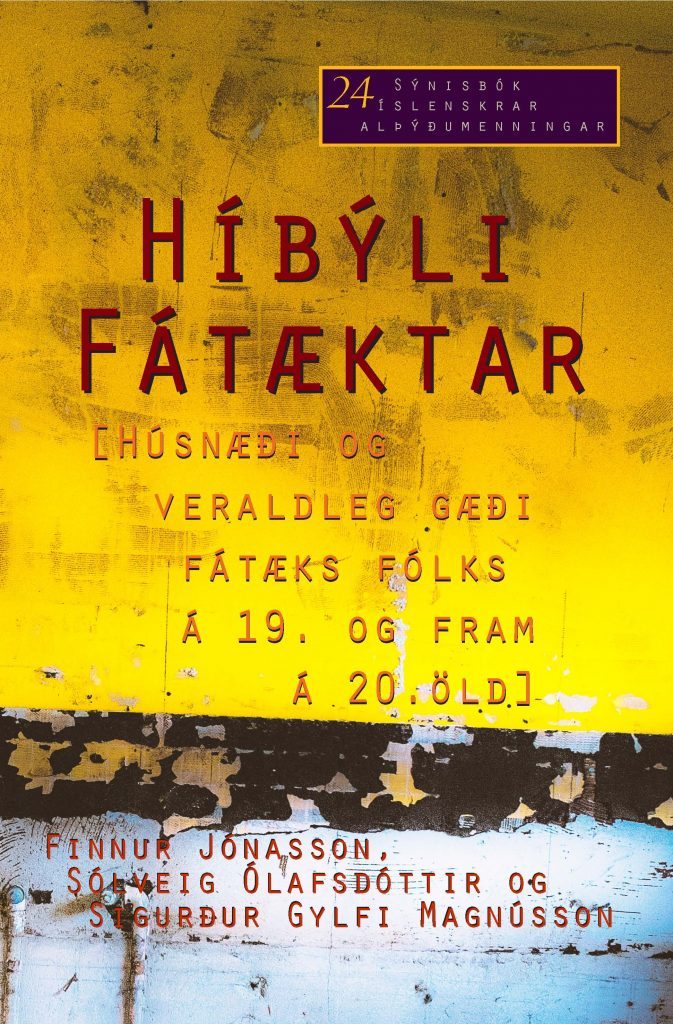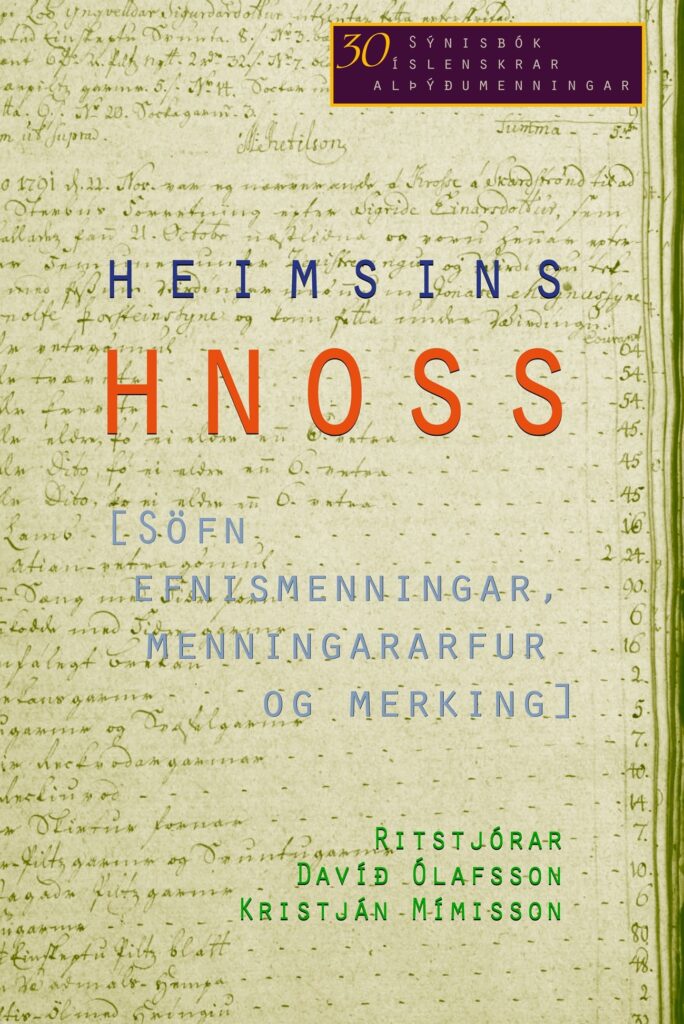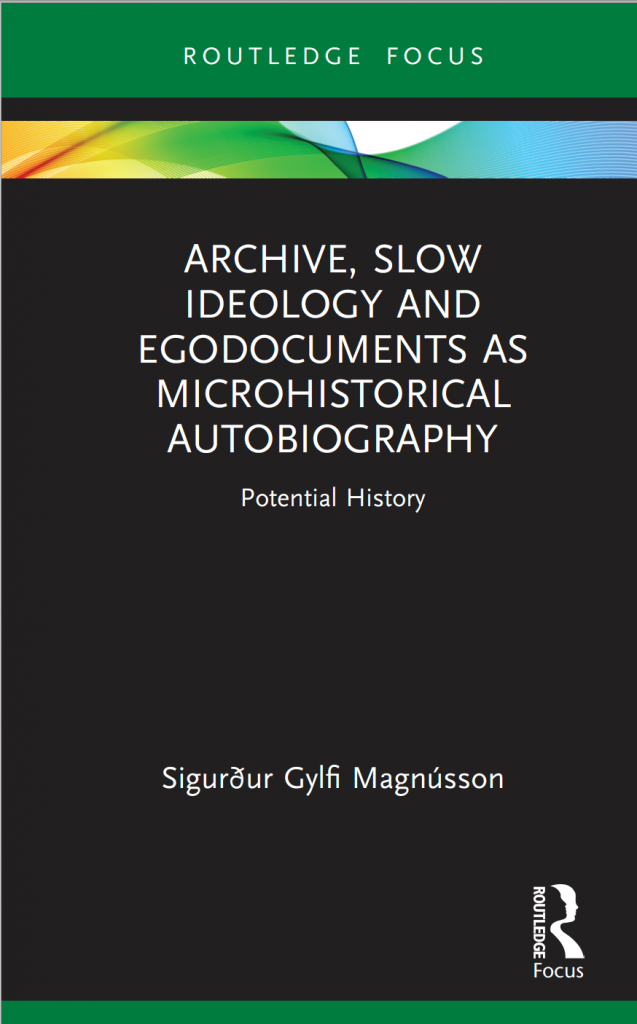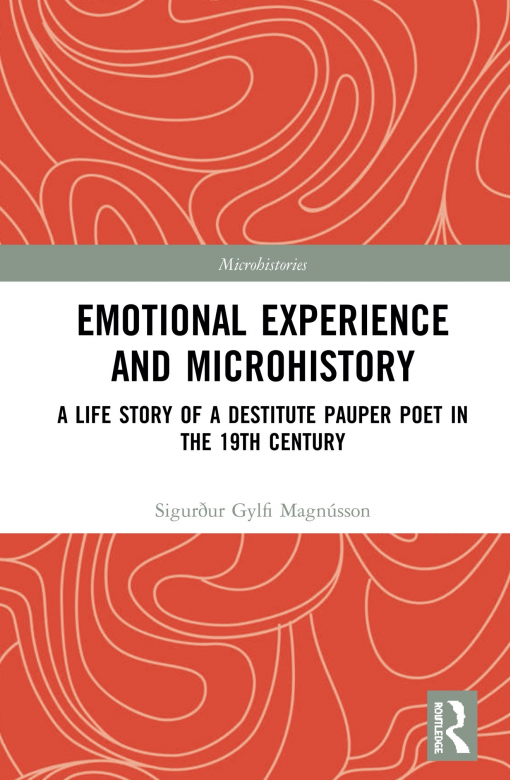Heimsins Hnoss: Söfn efnismenningar, menningararfur og merking.
Út er komin bókin Heimsins hnoss: Söfn efnismenningar, menningararfur og merking í ritstjórn Davíðs Ólafssonar og Krsitjáns Mímissonar. Í bókinni birtast greinar eftir hóp fræðimanna sem fjalla um eigur fólks á Íslandi á 18. og 19. öld. Til grundvallar liggja ólíkar gerðir munasafna, annars vegar gripir varðveittir á Þjóðminjasafni Íslands og hins vegar dánarbúsuppskriftir rúmlega 30 þúsund íslendinga, varðveittar á Þjóðskjalasafni Íslands. Þessi tvö gripasöfn eru til skoðunar í verkinu auk þess sem fjallað er um eðli safna almennt og þekkingarsköpun og -miðlun þeirra með margvíslegu móti. Hvað átti fólk af ólíkum stigum samfélagsins og á mismunandi aldri? Hvaðan komu þeir hlutir sem fólk átti og hvað varð um þá þegar það lést? Hvernig endurspegla þessi tvö söfn efnislegar eigur fólks á fyrri tímum? Rötuðu hverdaglegir gripir sem eru uppistaðan í dánarbúsuppskriftunum inn á Þjóðminjasafn Íslands? Á hvaða upplýsingum byggir hinn svonefndi „menningararfur“ sem hampaði við hátíðleg tækifæri?
The book My Favourite Things. Material Culture Archives, Cultural Heritage and Meaning is the fruit of the research project with the same name, which is funded with a grant of excellence by the Icelandic Research Fund 2018-2023 and hosted by the Center for Microhistorical Research at the Institute of History at the Department of Philosophy, History and Archaeology at the University of Iceland (microhistory.org).
This book consists of a total of 14 articles , together with an editor’s introduction. They are written within the parameters of a range of disciplines, such as museum studies, archaeology, literary studies and cultural history. The essays may be divided into two broad categories: on the one hand are essays addressing the subjects of museums, museology and materiality. In the other category are essays based upon sources in the National Archives of Iceland concerned with probate inventories and related auctions. Inter alia they address the legal framework for settlement of estates, as well as the content of the inventories and specific categories within them.
Archive, Slow Ideology and Egodocuments as Microhistorical Autobiography: Potential History – Sigurður Gylfi Magnússon.
The book aims to demonstrate how scholars in recent times have been utilizing egodocuments from various angles, and providing an opening for the multivocality of the sources to be fully appreciated. This first part of the book is concerned with the significance of egodocuments, both for the individual him/herself who creates such documents, and also for the other, who receives them. I approach the subject on the basis of my own personal experience, and go on to discuss the importance of such documents for the academic world, emphasizing more general questions and issues within the fields of historiography, philosophy of history, microhistory, and memory studies. See more.
Þættir af sérkennilegu fólki
What is it that makes someone unusual, that distinguishes a person from their peers, most of whom society considers “normal” (a phenomenon that does not actually exist, of course)? That is the question at the center of Tales of Peculiar People. The book attempts to understand what is behind the idea of “normal” and considers deviations from so-called normal behavior or customs. When it comes to defining who belongs to the majority – and at the same time, by default, who is relegated to the minority – the idea of “otherness” is key. But ultimately, it all comes down to power; specifically, the power some groups hold to dictate what constitutes “normal” or “abnormal” behavior and, in so doing, to decide the fate of others. Such power tends to lead to the emergence of certain norms based on a hierarchy that has often been constructed over a long period of time. Understanding “the other” requires delving into how social identities are formed and identifying the most important factors that come into play. From a societal perspective, social identity is natural, something that arises organically from a country’s cultural environment; in other words, it is ingrained from birth. See more
Emotional Experience and Microhistory – Sigurður Gylfi Magnússon.
Emotional Experience and Microhistory explores the life and death of Magnús Hj. Magnússon through his diary, poetry and other writing, showing how best to use the methods of microhistory to address complicated historical situations. The book deals with the many faces of microhistory and applies it’s methodology to the life of the Icelandic destitute pauper poet Magnús Hj. Magnússon (1873–1916). Having left his foster home at the age of 19 in 1892, he lived a peripatetic existence in an unstinting struggle with poor health, together with a ceaseless quest for a space to pursue writing and scholarship in accord with his dreams. He produced and accumulated a huge quantity of sources (autobiography, diary, poems, reflections) which are termed by the author as ‘egodocuments’. The book demonstrates how these egodocuments can be applied systematically, revealing unexpected perspectives on his life and demonstrating how integration of diverse sources can open up new perspectives on complex and difficult subjects. In so doing, the author offers an understanding both of how Magnússon’s story has been told, and how it can give insight into such matters as gender relations and sexual life, and the history of emotions. See more
Híbýli fátæktar: Húsnæði og veraldleg gæði fátæks fólks á 19. og 20. öld

Homes of Poverty: Housing and material conditions of poor people in the 19th and early 20th centuries.
Summary
The objective of this volume and many others in the series Anthology from Icelandic Popular Culture is to draw the attention of potential readers to the life of people living in poverty, and to provide an insight into a world which must be deemed in many ways unusual and unfamiliar. In the book we seek to define what “poverty” means, and to explore the resources available to individuals and communities in responding to shortage and inequitable division of material resources, with the aim of establishing the concept of a Culture of Poverty. The volume comprises four separate sections, all of which address the subject of the homes and circumstances of people living in poverty in Iceland in the 19th and 20th centuries. See more



